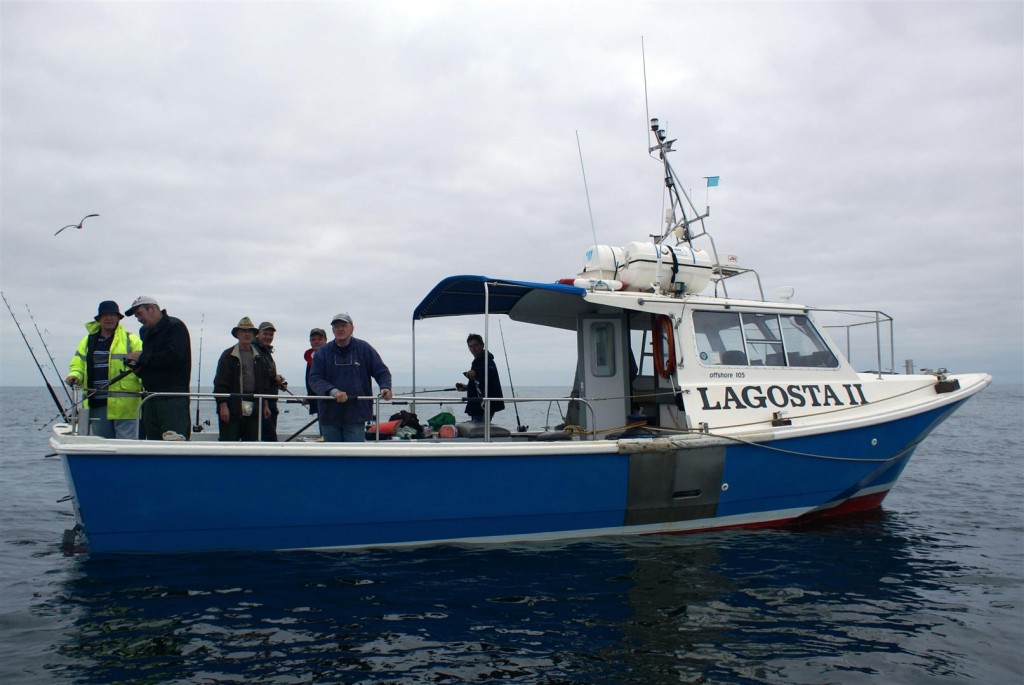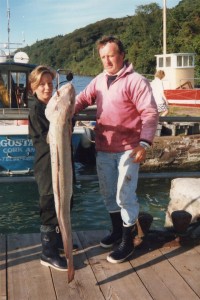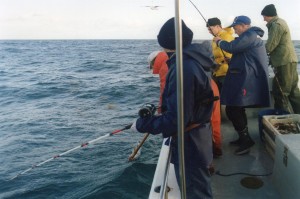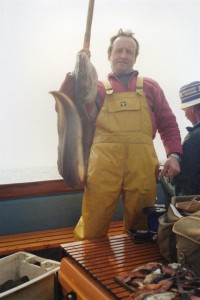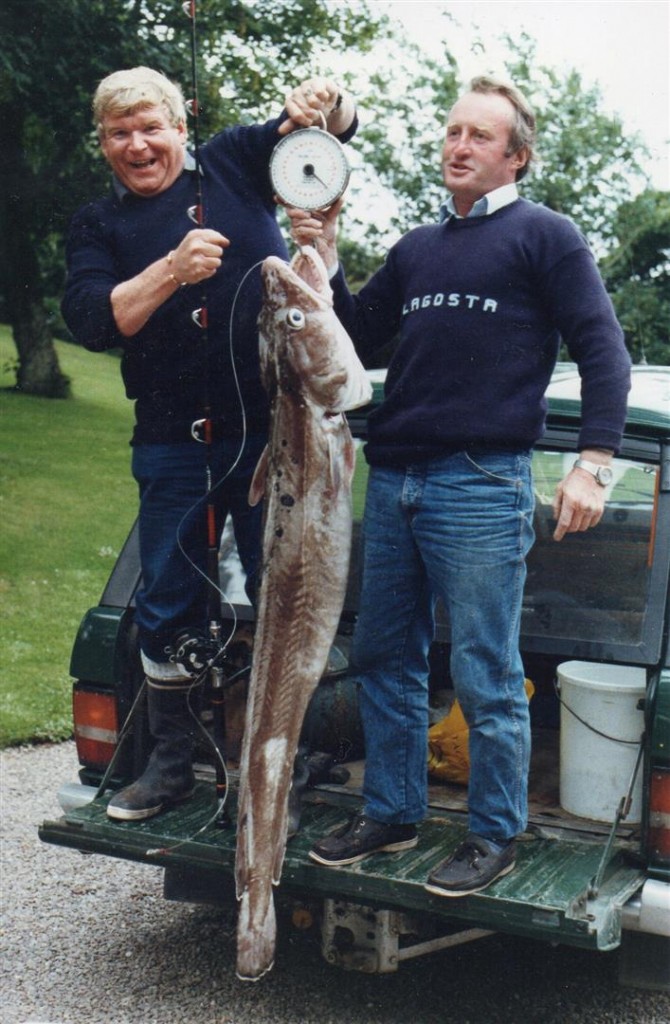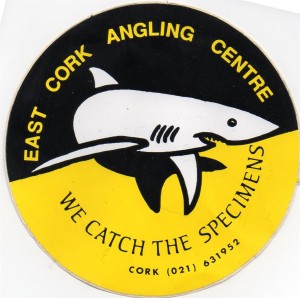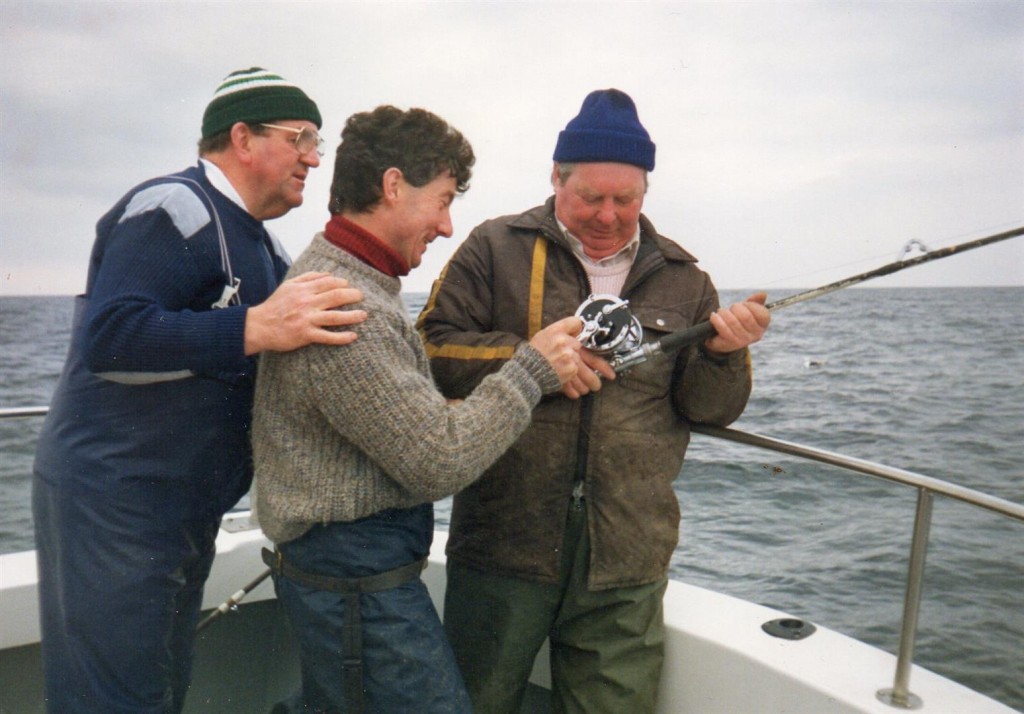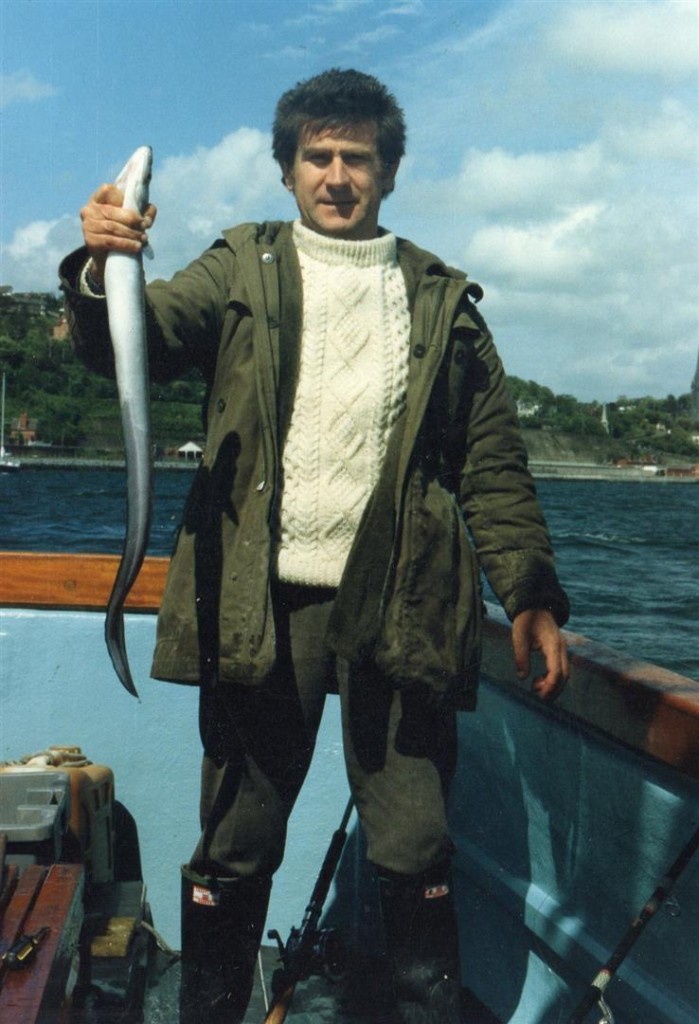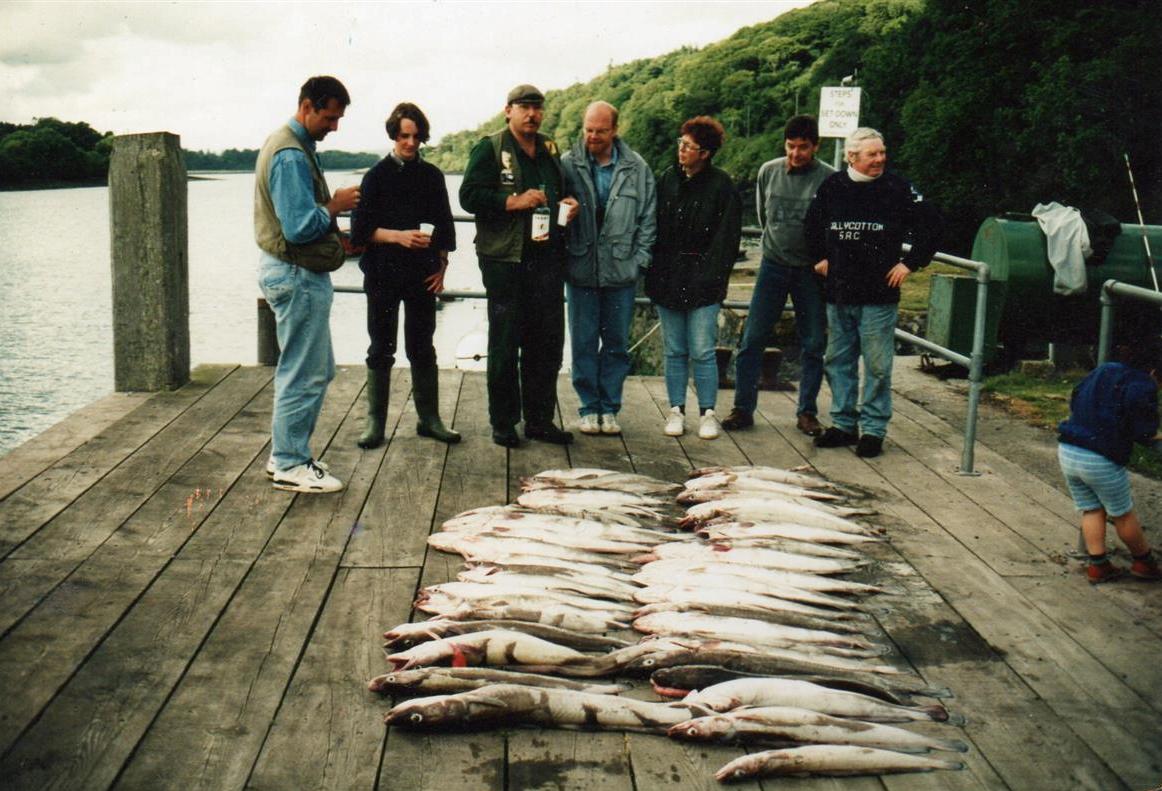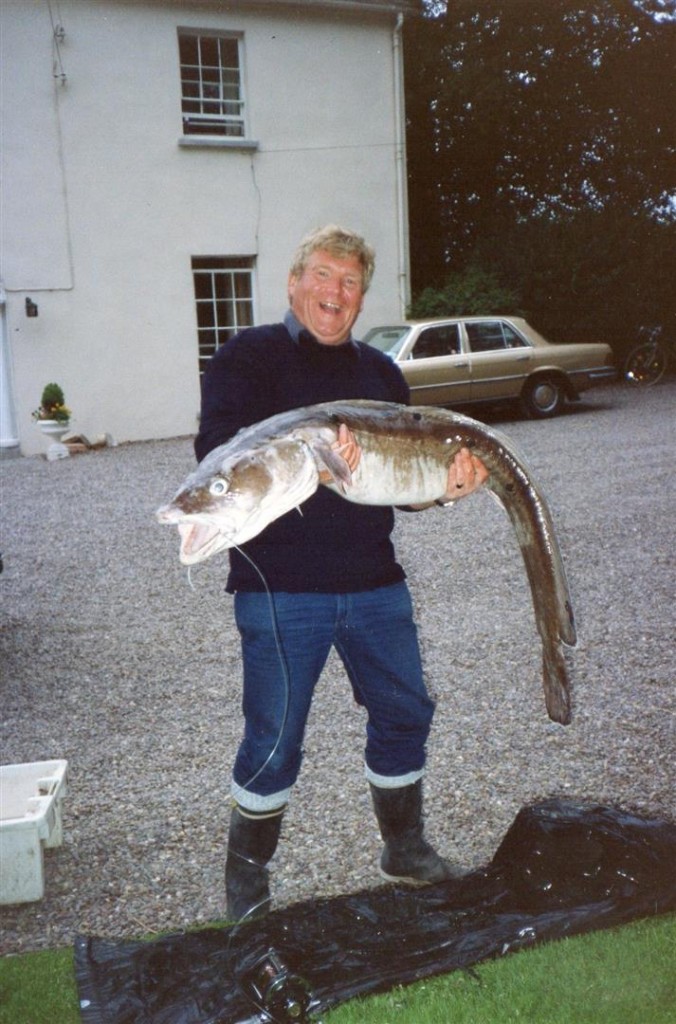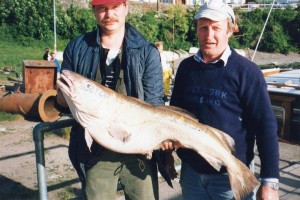Who Pioneered wreck fishing off the south coast of Cork? Brian Byrne on Lagosta put Cork on the map from the '80's... Jim Clohessy called to chat with Brian and talk about those early days.
South Coast Wrecking – Where it all began – Brian Byrne & Lagosta 2
There is something about fishing on shipwrecks. Apart from the chance of catching that big fish it is difficult to fish and not think about the wrecks that lies beneath the waves and how it ended up there. It is hard not to get the sense of history as you think about that drama that had to unfold for the ship to slide beneath the waves. Wreck fishing has been the source of fascination for many anglers for many years. From that first time setting foot on board a charter boat and making the long journey offshore or that mind blowing first time locating a wreck on your own boat to that moment of realisation that the fish you are looking at is surely a specimen fish, wreck fishing has the ability to shock and awe like no other style or location of sea angling.
We get a bit blasé nowadays when we speak of wreck fishing. Many small boat anglers will go wreck fishing but you will find few that will anchor these wrecks and instead will fish them drifting, a far easier prospect. What if you did not have that plotter? Did you ever think about when it all began? Did you ever think about those pioneers of the wreck fishing game and how they began to ply their trade? While you were listening to tapes on your Sony Walkman there were charter skippers plotting and planning an assault on the wrecks off the south coast of Ireland. When they did it they did it in style!
Pioneering
In the mid eighties a chap called Brian Byrne entered the charter angling business in Cork. The business of angling in Ireland would be changed forever and mention of “East Cork Angling Centre” or “Lagosta” would send anglers into a trance-like day dream of big fish. The eighties were tough times it was in the midst of these tough times that Brian and Cheryl Byrne set up the “East Cork Angling Centre”. They would offer the complete package to visiting anglers. Not only would Brian the best of angling from his boat “Lagosta”, but they would also provide accommodation in their lovely country house sited on the shoreline in the eastern regions of the Cork Harbour estuary. “We had the boat so it seemed like a logical progression” says Brian. “I had little experience on the angling front when starting out but I had notions that I would change the way that angling trips were organised and packaged for the customer.” It paid off and within a few years Brian was as busy as he could handle. Wreck fishing was carried out on a bit of a hit or miss basis, literally! While boats had basic sounders, navigation was carried out via the Decca system. Decca would be accurate when the vessel was close to the transmitting beacons but even at its best it would always be hit or miss when trying to navigate to a wreck. There were some inshore wrecks that we had land marks for. We would fish these but of course drifting over these wrecks was also a hit of miss affair. Convention at the time had us anchoring wrecks by tossing a grapnel anchor directly into the wreck. It was never going to yield the greatest fishing”. East Cork Angling were attracting their share of UK based anglers. Anglers related their tales of long distance wreck fishing and the magnificent fishing that these wrecks would yield. Massive amounts of ling to massive sizes and catches of cod and pollack that could be only dreamt of along the south coast. Brian took it upon himself to head to Dartmouth in southern England in order to “learn the trade” of wrecking. “I travelled over and worked with Brian Dash. He was one of the best around. I learnt the intricacies of anchoring wrecks and perfected my boat handing skills. At that stage Brian had a Lochin 40 – a superb craft”.
Brian returned to Ireland and began to put his skills to work. There was a problem though, the steaming time to get to the wrecks was too great. “In the late eighties I decided to change my boat. Eventually in 1991 my newly built Offshore 105 was delivered. She was certainly the first fast charter on the south coast if not the country”. Now Brian could reach the distances he wanted. All these events coincided with the arrival of GPS. President of the USA Ronald Regan decided in 1983 that GPS should be made available to civilians as soon as the system was completed. It was 1989 before Magellan launched the first “affordable” GPS unit. At least skippers could navigate with a degree of certainty. These units were not the plotters that we know now. The navigation was by numbers only. it still made it difficult to drift the wreck accurately. GPS had an inbuilt error “selective availability” meant that while accurate most of the time there could be an error factored in by the Americans at any stage. This error was not removed until 2000. In the meantime many skippers purchased differential GPS units which attempted to correct the selective availability error by using radio signal as well.
Brian takes up the story:
“Those first trips to the far off wrecks were incredible. We would take a few drifts and then we would anchor the wreck. We would only drift if I felt the crew were experienced enough. Other than that it was straight to anchor. The range of big fish at anchor was better too. I usually cleared the wheel house so I could concentrate on the anchoring. There is a bit of science to it, you have to deal with wind and tide and getting it wrong only means missing the wreck and having to do it all again. I experimented with dan-buoys in order to mark the wreck and make things easier but this was never satisfactory. It was hard to beat watercraft or boat craft. I had after all served my time with the best.
I would ask guys to get their gear ready while I worked out the best position. In those early days I even used lead core rope and a chain the length of the boat. Once we anchored uptide I would judge the distance and watch the sounder for the wreck to appear. One I was happy with our position the shout went up “drop away boys” you never had to repeat yourself”.
Most experienced hands knew not to send down store bought feathers and suchlike. Ling would make fast work of these traces. Most tied up their own paternosters and baited with mackerel. “We pioneered the use of baited pirks on these trips. We found that a baited pirk would attract ling when drifting but boy did the congers like the baited pirks when fished at anchor. It certainly made life easier for me as the skipper. Using a t-bar on a conger with a pirk in its mouth is far easier than when the fish is caught with a leger trace”. (And you probably wondered why Cork Based anglers like to use pirks for conger fishing!)
“After the first wave of suicidal ling would come the congers. The congers would come fast and heavy once we remained in the vicinity of the wreck. Subtle changes to the anchor setup would insure that we stayed in the zone. The catches of ling on some of these trips exceeded all expectation. Often anglers would look at the numbers of fish in the hold and ask to move off the wreck because they were wrecked! Of course we also caught cod and all of the other wreck dwelling species.”
All this was done with the best ethos of customer service. Back then it was a rarity to get a hot drink on board. On Lagosta 2 Brian would ply you with tea at every stop. Brian always finished the day by cleaning the boat and taking care of the catch. “We never sold any fish, or should I say we never profited from the fish. If any were sold, and that was rare, the money would be given back to the anglers. They had caught the fish after all. When the anglers were deposited at the pier in East Ferry I would finish cleaning down the boat. It was all part of the service – you will never get on to a dirty boat”.
If you look at the Irish Specimen Fish Committee’s annual reports over the years you may notice an anomaly – There are no ling in East Ferry yet each year through the eighties, nineties and noughties you will see a parade of specimen fish with the location given as East Ferry. These are Brian’s crews captures. Year after year Brian was the top performing specimen skipper in the country. Wreck fishing was the priority and as such specimen Ling, pollack, coalfish, cod, whiting haddock and even hake were certified. Year after year East Ferry was firmly on the map at the place to go for decent fishing. It was reflected in the fact that it was difficult to book Lagosta.
Legacy
I took my first trip wreck fishing with Brian Byrne. I would not be over dramatic if I declared that it was a life changing experience in angling terms. I found the whole experience from start to finish to be rather mind blowing. Firstly it was the first time I would have been aboard a fast charter boat – It was faster than my own boat at the time. The electronic gear on board was incredible. Lagosta was the only boat I have seen to this day that had an AquaScan Magnetometer fitted. This was how serious Brian was about his wrecking. From taking a position of a “PA” (Position Approximate) wreck off the charts to navigating to the area and them beginning to “mow the lawn” as Brian calls it. Travelling in a box pattern search while towing a magnetometer probe. From the readings achieved Brian would narrow his search until he located the wreck. Of course this work was done largely alone or with a trusted friend. This background work went unnoticed by us the customer as Brian navigated directly to the wreck. I will never forget that day and the first view of the wreck as it appeared on the echo sounder. The wreck riding from the bottom and the cloud of fish hanging over the highest point. “There’s the pollack” said Brian to me and I nodded wisely – of course it was (I hadn’t a clue!). I cut a strange figure with my mouth gaping open as I observed Brian at work.
The whole “historical thing” hit me too. I could not help thinking what had transpired at this patch of water – the violence that had resulted in a sunk ship with lots of casualties too boot. As it happened Brian was also interested in these stories. He had his little “Black Book” where he kept his notes about each wreck. He noted the fishing at different stages of time and tides of differing strength. He also had historical data about the wreck. The name of the ship and the story about its sinking. It was like Google before the internet!
We were an experienced crew and therefore Brian took a few drifts first. The sense of anticipation as you waited for your bait to hit bottom was unbelievable. Immediately I was struck by the depth. I would never be fishing in such depths. It had to be deep, you could hardly see land if at all, another first for the small boat angler from Guileen. That first drift yielded a ling for every angler on the boat. as did the next drift. We anchored and bigger fish began to appear, so did the congers. Brian moved in his chirpy manner between the anglers netting and t-baring off fish. The day went on like this from start to finish. As soon as things went quiet on one wreck we headed for another. By the time we reached East Ferry we were quiet chaps!
I suppose it was from there I began to plot a course that would see me fishing wrecks from my own small boat. It would be the late nineties before I would have amassed the information and the expertise necessary to take on trips like this. I suppose some would have thought it foolhardy at the time but it was a series of calculated risks – as all fishing is- to me. If your equipment is up to the task then why not try it -that was the mentality. I remember the first time I met Brian out on a wreck. I could see him looking down from Logasta down at the Orkney 19 and smiling (He probably was not impressed, though he did not show it). “Looks like I created a monster” said Brian across the water was my rod bent almost double into a specimen ling….

